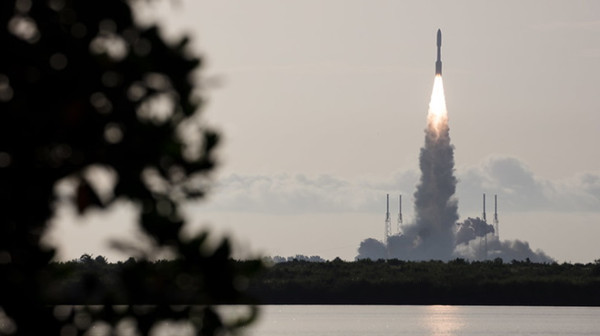NASA's Perseverance Mars rover successfully launched today from Cape Canaveral in Florida. The rover, which will be powered by a Multi-Mission Radioisotope Thermoelectric Generator (MMRTG) developed at the US Department of Energy's (DOE) Idaho National Laboratory (INL), will land on Mars to begin exploration in February 2021.

The Atlas V carrying Perseverance lifts off from Cape Canaveral (Image: NASA)
"The Mars 2020 Perseverance rover, powered by the United Launch Alliance Atlas V 541 rocket, has blasted off from Space Launch Complex 41 at Cape Canaveral Air Force Station! The liftoff went right on time, at 7:50 am EDT," NASA said.
United Launch Alliance (ULA) is the only space launch provider certified to handle RTGs, the company's president and CEO, Tory Bruno, said during NASA's live broadcast. NASA certifies the rocket, but NASA and DOE together certify the provider to carry a nuclear payload, he explained.
Perseverance will spend at least one Mars year (687 Earth days) searching for signs of past microbial life and helping scientists better understand the Martian geology and climate. During that time it will also collect rock and soil samples for a possible return to Earth. The INL-developed Multi-Mission Radioisotope Thermoelectric Generator (MMRTG) will provide the rover with heat and power, providing electricity for the rover's basic operations and also keeping its tools and systems at optimal temperatures.
The MMRTG is a radioisotope power system, converting heat from the decay of plutonium-238 (Pu-238) into electrical power. It has an operational lifespan of 14 years. The Pu-238 fuel was supplied by DOE's Oak Ridge National Laboratory.
Perseverance also carries a SuperCam laser, supplied by the DOE's Los Alamos National Laboratory. This piece of equipment will be able to determine the minerology, chemistry, and even molecular and atomic composition of rocks and soils by firing a laser to study targets more than 20 feet (6 metres) away, but can also function as a cleaning tool for the rover by removing dirt and sand from rock samples, allowing the rover's instruments to have a clearer view.
DOE has enabled space exploration on nearly 30 missions over the past 50 years, including the Curiosity rover which is currently on Mars, US Under Secretary for Science Paul Dabaar said. NASA and DOE are already planning for their next goal: NASA's Dragonfly mission to Saturn’s moon, Titan, in 2026, which will also be powered by DOE, he said.
Researched and written by World Nuclear News